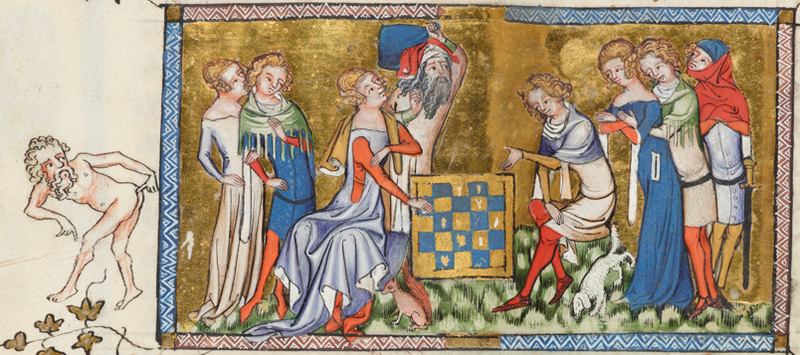
Embroidered stitches radiate around its edges. On another leaf ( Figure 6, 42r), we can see how a larger, unrepaired hole in the parchment was filled with stitched macramé in purple, pink, green, and white silk thread.

On this page ( Figure 5, 153v), a decorative repair sits beside one that has been left unadorned though the parchment maker’s thread has been picked away, the sewing holes remain visible. 1 In some instances, the parchment maker’s original stitched repairs, which would have been quite plain and utilitarian, have clearly been removed and replaced with more decoratively stitched silk thread in bright colors. It is filled with beautifully stitched and embroidered repairs, possibly carried out by nuns associated with the abbey. The examples in this section are all drawn from the Berthold Sacramentary, an incredibly luxurious manuscript that was written and illuminated in Weingarten Abbey in Germany. Berthold Sacramentary, Weingarten, Germany, 1215–1217, MS M.710. The following examples illustrate a few of the techniques and materials that the makers (and users) of manuscripts selected to decorate imperfections.įigure 6: A hole in the parchment is embroidered around its perimeter and filled with macrame on folio 42r. Medieval scribes and artists appear to have taken holes and imperfections in stride, sometimes ignoring their presence entirely and calmly writing around them or sometimes using them as opportunities for creative, humorous, and playful decoration. A careful parchment-maker could prevent this by stitching perforations shut with a heavy thread before final tensioning.
#Medieval manuscripts blade and knife skin#
As the skin is further tensioned, these holes in the wet skin will expand, reducing the amount of useful surface area and therefore the value of the finished parchment. Weaknesses in the skin can cause it to rupture as it is stretched on the frame, resulting in circular or oval holes of many sizes. All of these are frequently evident in the finished product.

But in other manuscripts, the parchment retains more evidence of both its source and manufacture: smatterings of hair, uneven coloration, scars from wounds or insect bites sustained during the animal’s lifetime, knife-gouges from the slaughtering process.

In some manuscripts the parchment is amazingly thin, even translucent, and so pristinely white that it is difficult to imagine its animal origin. Once dry, the skin is scraped with a sharp curved or crescent-shaped knife (often referred to in Latin as a lunellum) to prepare its surface for writing or painting.įigure 2: Here, a parchment maker has stitched up an area of damage in a wet skin to prevent it from expanding as the skin is stretched further. After the animal is slaughtered, hair and excess flesh are removed from the skin, which, in a wet state, is stretched on a wooden frame and dried under tension. Parchment, the predominant writing support in many parts of the ancient and medieval world, is prepared animal skin, usually calf, goat, or sheep. The parchment page is rich with information about the history of manuscript production and about the ways that makers and consumers of manuscripts viewed the materials used to create them. But beyond the illuminations, and even beyond the text, the substrate itself merits closer inspection. When looking at a medieval manuscript, it is often the illuminations that catch the eye-colorful figures rendered in miniature, gleaming gold backgrounds, ornate initials that twirl and bloom across the margins.

Figure 1: An early illustration of a parchment maker preparing the surface of the skin with a lunellum, or rounded knife.


 0 kommentar(er)
0 kommentar(er)
